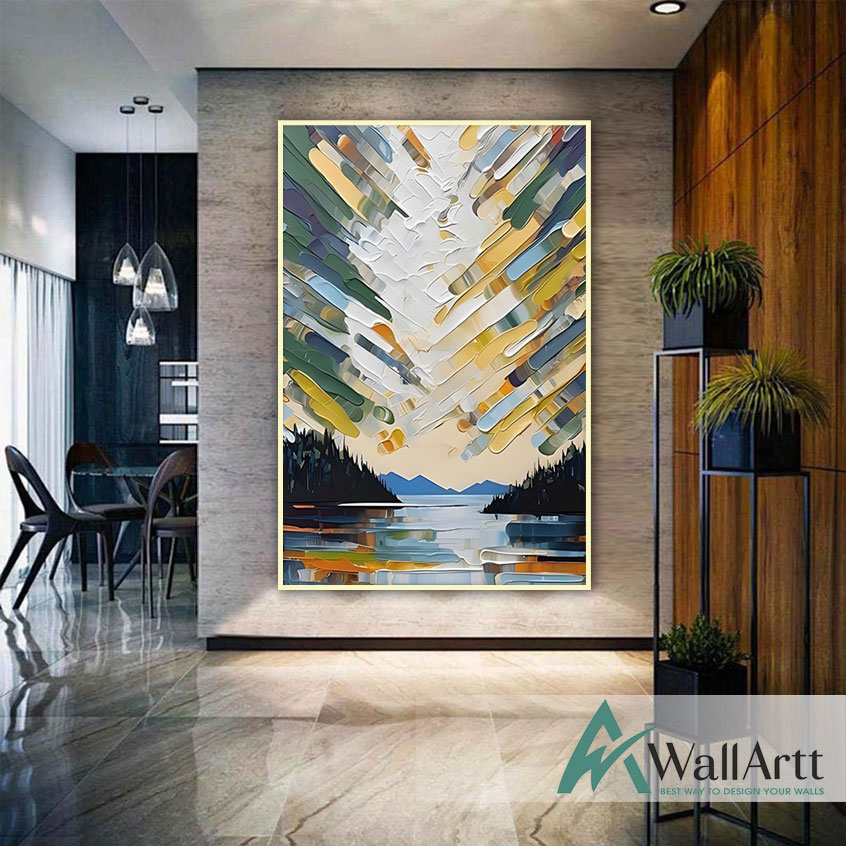The resurgence of portrait art in British homes marks a fascinating revival of classical aesthetics blended with contemporary tastes. This trend not only highlights the timeless appeal of portraiture but also illustrates a deeper cultural appreciation for personal storytelling through art. As we examine this renaissance, we will discover how modern British households are embracing these artworks and their influence on interior design.
Historical Elegance Meets Modern Design
Portrait art, with its rich history in the British art scene—from the Tudor courts to the grandiose canvases of the Victorian era—has long been a symbol of sophistication and status. Today, this tradition is being reimagined in contemporary settings. Modern British homes are incorporating portraits not just as decorative elements but as focal points that add depth and character to a space. The integration of historic artistic techniques with modern themes allows for a fresh yet familiar aesthetic that enhances the home environment.
One of the key reasons behind the renewed interest in portrait art is its ability to personalise and humanise living spaces. In an age where bespoke and individualised decor is highly prized, portraits offer a unique way to customise interiors. Whether it’s a commissioned piece of family members, a self-portrait, or a work featuring a historical figure, each painting introduces a story to the room, making spaces more engaging and reflective of the owner's identity.
Portraits are more than just visually appealing; they evoke emotions and provoke thought. The eyes of a portrait’s subject can convey a spectrum of emotions—from melancholy to bliss, introspection to defiance. Having such powerful expressions within the home can dramatically alter the atmosphere, making rooms feel more alive and emotionally resonant. This psychological impact is one of the compelling reasons homeowners are drawn to these works, as they bring a human touch to the often sterile modern decor.
Artistic Techniques and Innovations
Contemporary British artists are pushing the boundaries of traditional portraiture by experimenting with various mediums and styles. From hyper-realistic paintings to abstract interpretations, the diversity of modern portrait art is vast. Artists like Jonathan Yeo and Nicky Philipps are known for their innovative approaches that challenge conventional perceptions of portraiture, making it appealing to a new generation of art enthusiasts.
Incorporating portrait art into home decor requires thoughtful consideration of the artwork's placement and the room's overall aesthetic. Portraits can serve as an anchor in a minimalist room or create a sophisticated juxtaposition in a more eclectic setting. Additionally, the choice of frame and its placement can either amplify the artwork's impact or subtly integrate it into the room, depending on the desired effect.
For those looking to incorporate iconic British portraits into their homes, there are numerous options ranging from reproductions of classic pieces to contemporary portraits that reflect modern British culture. These artworks not only beautify the space but also act as cultural touchstones that enrich the home’s environment with historical and artistic significance.
As we look to the future, the role of portrait art in interior design is set to grow with technological advancements such as digital portraiture and interactive installations. These innovations will allow for even more personalisation and engagement, making portrait art an integral part of home design for years to come.
Wrapping It Up
The renaissance of British portrait art in contemporary homes is a testament to the enduring power of personal expression through art. As more homeowners discover the transformative impact of these artworks, we can expect to see a continued revival of interest in this art form. By integrating portrait art into their decor, contemporary homes can enjoy a blend of historical richness and modern sophistication, making each space uniquely personal and emotionally compelling.
By embracing the revitalised interest in portrait art, homeowners can transform their living spaces into a reflection of both their personal taste and the rich cultural heritage of Britain, bridging the gap between past and present in the most artistic way possible.





